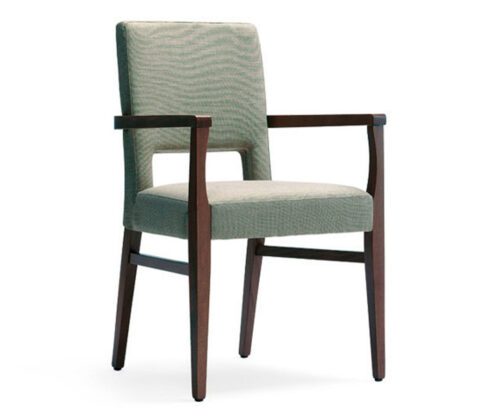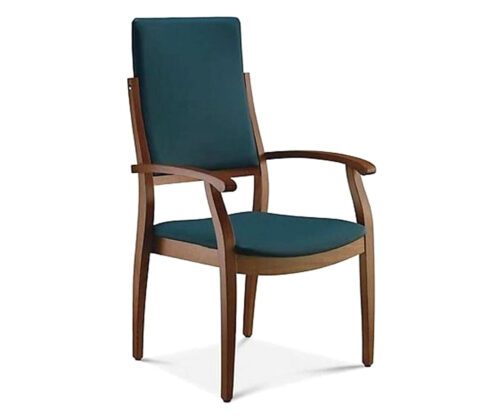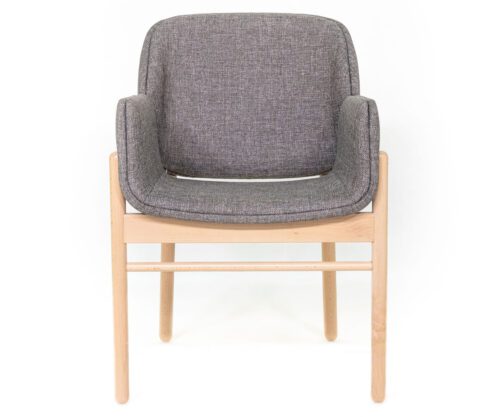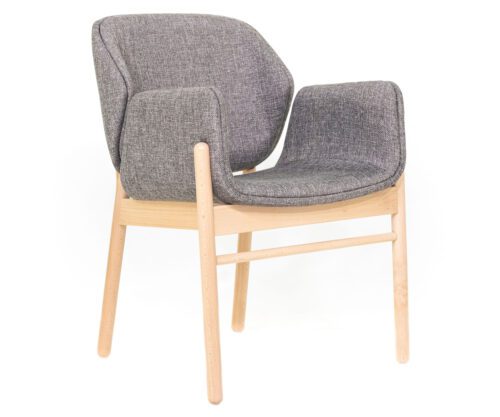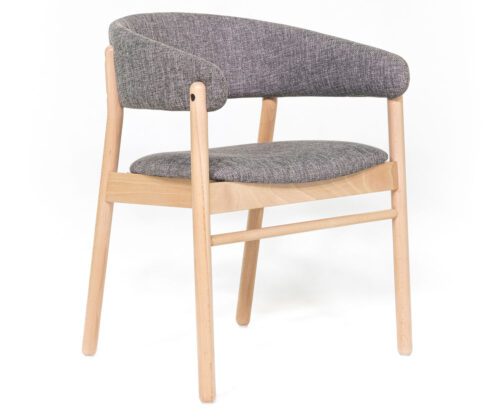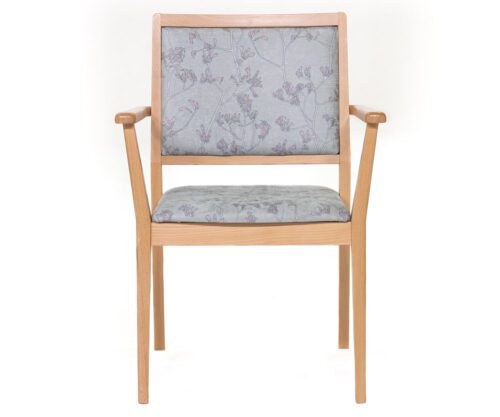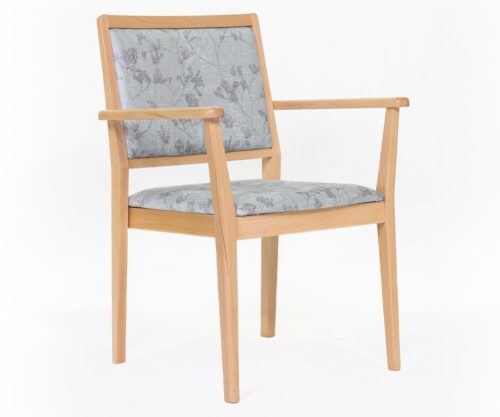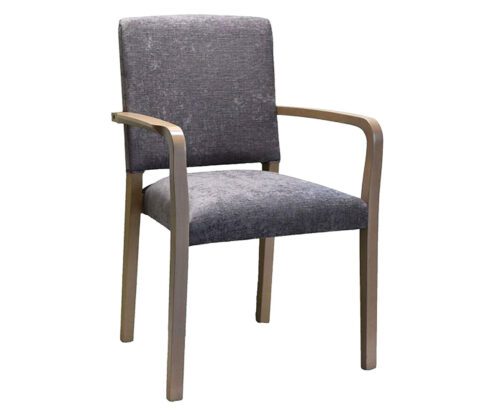Aged Care Dining Furniture: Creating dining rooms that promote dignity and independence

How the right aged care dining furniture helps promote dignity and independence for elderly Australians
Meal times are vitally important for residents of aged care facilities and aged care dining furniture plays an important role in creating the right mealtime atmosphere. For many residents, meal time is their only opportunity to consume food and fluids to provide nourishment that’s vital to their health and well-being. The aged care dining experience should provide a social meeting place, a place for family and friends to spend time with residents and should be a part of the day that residents look forward to.
The dining room’s atmosphere influences the residents’ enjoyment of their food and if the dining room environment and the aged care furniture is not set up appropriately, this can hinder food consumption.
There’s a perception that some aged care facilities regiment eating for greater efficiency. However, if this is the case, this is a missed opportunity for residents to socialize within a comfortable home-like environment, enjoy the sensory pleasure of food and be reminded of good times.
Aged care dining furniture plays an important role in creating the right mealtime atmosphere, offering dignity and independence during mealtimes and provide residents with an opportunity to break away from institutionalized life.
Arranging aged care dining furniture
Just like in our own homes, dining rooms within aged care homes are the heart of the facility and should be easy to access for residents. Dining rooms should be positioned so that elderly residents don’t have to venture too far for meals and so that visitors feel comfortable and welcome to stay during meal times.
There should be enough aged care dining furniture to make it a home-like, social experience, but not so much that it appears cluttered.
Tables and chairs should be arranged to promote interaction between residents while also adhering to social distancing requirements when necessary.
Ideally, aged care dining furniture should be arranged for small groups of diners (e.g. two-person tables). Small dining tables are home-like and promote social interaction.
There should be adequate space between tables for wheelchairs, and walkers and for residents to independently seat themselves.
There should also be enough space for staff to move around to serve or provide assistance to residents.
Some aged care facilities choose to adopt a café-style dining room. This style of dining room may include a counter for serving food and drink, a menu board on the wall, and small tables with seating for four people. This environment promotes social contact between residents and is comfortable for visitors.
It’s also worth considering that some aged care homes don’t have a separate dining room. For example, the dining room may also serve as a lounge room and an activity room. When it’s difficult to define the dining room, this can lead to clutter. Therefore, it is important to define meal times, by ensuring that tables are set up correctly and that shared space looks like a dining room during meal times.
Choosing the right aged care dining furniture
As well as choosing aged care dining furniture that creates a home-like place to eat and socialize, dining chairs and tables for the elderly should be chosen with height and stability in mind.
Dining room furniture height is important for fostering independence in residents, both in terms of getting in and out of chairs and also for providing a comfortable height to eat at.
Research conducted by the Queensland University of Technology indicates that residents prefer chairs that are above the recommended height for older people so that they will be able to get out of them more easily. A comfortable height to eat at can also impact a person’s ability to easily reach and enjoy their meal.
Chairs should be sturdy and have armrests with a sufficient grip that allows elderly residents to get up and down independently. Avoid backs that lean backward as this can make it difficult for residents to get out of and may also be a barrier to easily reaching their meal.
Chairs should have firm seat cushions to aid independent mobility and have an open base for ease of cleaning. Many aged care residents also struggle with chairs that are too deep in the seat pan because they are not able to easily touch the floor or sit comfortably, forcing them to slump.
Dining room chairs should have upholstery that is smooth and easy to clean with few seams, folds, or other places where food and other substances can be caught. Try to avoid fabrics that have a high pile, as they can be very difficult to get down into the pile to remove the contaminates instead of just wiping over the surface which is what can be done on a flat pile or vinyl upholstery. The fabric should have a protection treatment applied for ease of cleaning.
There should be no sharp edges or corners on aged care dining furniture.
Dining chairs should fit under tables and the tables should also cater to wheelchairs and walkers.
Dignity and independence at meal times
Getting the aged care dining experience right is about promoting dignity and independence at meal times.
Choosing the right dining room furniture and arranging it to encourage social interaction can lift the spirits of residents and provide a pleasurable dining experience which can go a long way to improving the lives of both residents and staff.
Are you looking for furniture for your aged care facility?
With over 20 years of experience in the aged care furniture manufacturing industry, we bring solutions to our client’s unique circumstances; it’s what we do best.
Call us today on 07 3808 7922 or send us a message and we will share with you how you can strike the balance between function, aesthetics and budget.
Explore our range of aged care dining furniture
More News
Aged Care Dining Furniture: Creating dining rooms that promote dignity and independence

How the right aged care dining furniture helps promote dignity and independence for elderly Australians
Meal times are vitally important for residents of aged care facilities and aged care dining furniture plays an important role in creating the right mealtime atmosphere. For many residents, meal time is their only opportunity to consume food and fluids to provide nourishment that’s vital to their health and well-being. The aged care dining experience should provide a social meeting place, a place for family and friends to spend time with residents and should be a part of the day that residents look forward to.
The dining room’s atmosphere influences the residents’ enjoyment of their food and if the dining room environment and the aged care furniture is not set up appropriately, this can hinder food consumption.
There’s a perception that some aged care facilities regiment eating for greater efficiency. However, if this is the case, this is a missed opportunity for residents to socialize within a comfortable home-like environment, enjoy the sensory pleasure of food and be reminded of good times.
Aged care dining furniture plays an important role in creating the right mealtime atmosphere, offering dignity and independence during mealtimes and provide residents with an opportunity to break away from institutionalized life.
Arranging aged care dining furniture
Just like in our own homes, dining rooms within aged care homes are the heart of the facility and should be easy to access for residents. Dining rooms should be positioned so that elderly residents don’t have to venture too far for meals and so that visitors feel comfortable and welcome to stay during meal times.
There should be enough aged care dining furniture to make it a home-like, social experience, but not so much that it appears cluttered.
Tables and chairs should be arranged to promote interaction between residents while also adhering to social distancing requirements when necessary.
Ideally, aged care dining furniture should be arranged for small groups of diners (e.g. two-person tables). Small dining tables are home-like and promote social interaction.
There should be adequate space between tables for wheelchairs, and walkers and for residents to independently seat themselves.
There should also be enough space for staff to move around to serve or provide assistance to residents.
Some aged care facilities choose to adopt a café-style dining room. This style of dining room may include a counter for serving food and drink, a menu board on the wall, and small tables with seating for four people. This environment promotes social contact between residents and is comfortable for visitors.
It’s also worth considering that some aged care homes don’t have a separate dining room. For example, the dining room may also serve as a lounge room and an activity room. When it’s difficult to define the dining room, this can lead to clutter. Therefore, it is important to define meal times, by ensuring that tables are set up correctly and that shared space looks like a dining room during meal times.
Choosing the right aged care dining furniture
As well as choosing aged care dining furniture that creates a home-like place to eat and socialize, dining chairs and tables for the elderly should be chosen with height and stability in mind.
Dining room furniture height is important for fostering independence in residents, both in terms of getting in and out of chairs and also for providing a comfortable height to eat at.
Research conducted by the Queensland University of Technology indicates that residents prefer chairs that are above the recommended height for older people so that they will be able to get out of them more easily. A comfortable height to eat at can also impact a person’s ability to easily reach and enjoy their meal.
Chairs should be sturdy and have armrests with a sufficient grip that allows elderly residents to get up and down independently. Avoid backs that lean backward as this can make it difficult for residents to get out of and may also be a barrier to easily reaching their meal.
Chairs should have firm seat cushions to aid independent mobility and have an open base for ease of cleaning. Many aged care residents also struggle with chairs that are too deep in the seat pan because they are not able to easily touch the floor or sit comfortably, forcing them to slump.
Dining room chairs should have upholstery that is smooth and easy to clean with few seams, folds, or other places where food and other substances can be caught. Try to avoid fabrics that have a high pile, as they can be very difficult to get down into the pile to remove the contaminates instead of just wiping over the surface which is what can be done on a flat pile or vinyl upholstery. The fabric should have a protection treatment applied for ease of cleaning.
There should be no sharp edges or corners on aged care dining furniture.
Dining chairs should fit under tables and the tables should also cater to wheelchairs and walkers.
Dignity and independence at meal times
Getting the aged care dining experience right is about promoting dignity and independence at meal times.
Choosing the right dining room furniture and arranging it to encourage social interaction can lift the spirits of residents and provide a pleasurable dining experience which can go a long way to improving the lives of both residents and staff.
Are you looking for furniture for your aged care facility?
With over 20 years of experience in the aged care furniture manufacturing industry, we bring solutions to our client’s unique circumstances; it’s what we do best.
Call us today on 07 3808 7922 or send us a message and we will share with you how you can strike the balance between function, aesthetics and budget.
Explore our range of aged care dining furniture
Commercial furniture by room
Based in Brisbane, we’re an Australian manufacturer of health and aged care furniture, retirement living furniture, hotel and accommodation furniture and student accommodation furniture. We also supply a range of commercial office furniture.
Is your commercial furniture built to last?
Not sure? Get your Furniture Quality Checklist today.
Discover what you need to know before purchasing commercial furniture. Confidently order furniture without compromising on quality, style, and the comfort and safety of your clients.
PLUS, sign up for Retirement Living and Aged Care Industry News.

